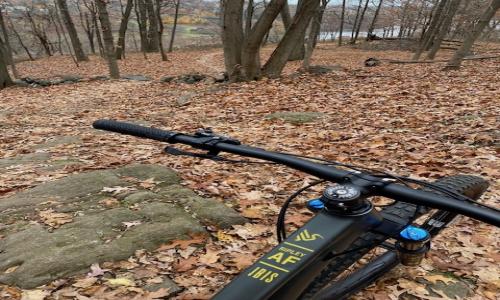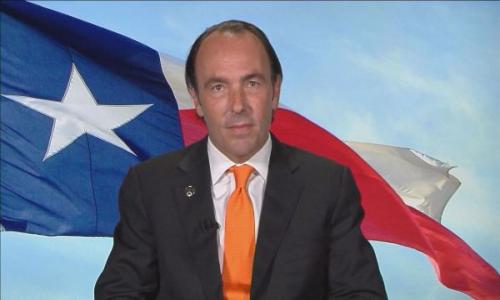Last month, we reported on the first increase in 3 and 5 year CD rates that we had seen in over two years. The increased occurred against the backdrop of a runup in bond and mortgag rates in the wake of the Fed's announcement that it might begin to pull back on its stimulus measures. The Fed quickly moved into damage control to talk rates back down and indicated a pullback in bond buying would not happen if the economy remained weak. So, we wondered what would happen to CD rates?
The good news, is that 3 and 5 year CD averages continue to show signs of life. From one month ago, 12 month average CD rates decreased by a measly one basis point from 0.354 to 0.353% APY. Average three year CD rates remained flat at 0.711% APY and 5 year average CDs increased from 1.052% to 1.056% APY, up from their low of 1.049% APY in June. This increase may seem minor, and it is, but it is the most sustained increase we have seen in deposit rates since the middle of the financial crisis in 2008-2009. The chart below shows that change that has occured when we examine the spread between 1 and 5 year CD rates. Long term rates have reversed their relative decline, pointing to a shift in economic and rate conditions.

All signs point to the economy gaining momentum through the end of this year and into next year. I do believe that this economic upturn is real and that rates will continue to slowly rise from this point (as long as the Federal government doesn't botch the recovery with bad policy).
The chart below shows the trend in average rates since October 2012.

Top Rate Recap
During this period, top savings and CD rates stayed pretty much status quo.
- Online Savings: AmTrust Direct retains the top spot at 1.05% APY.
- 1 Year CD: GE Capital Retail Bank continued to hold the top spot at 1.05% APY. GE Capital Bank now also has the top spot. To read about the differences between these two GE-based banks, please read here.
- 3 Year CD: Barclays Bank Delaware has dropped their formerly best rate from 1.35% to 1.25% APY. CIT and GE Capital Retail Bank now have the best rate at 1.30% APY.
- 5 Year CD: One month ago the best rate was Barclays Bank Delaware, and CIT Bank offering 1.75% APY. iGoBanking.com now offers a 2.05% APY CD while EverBank offers a 2.04% APY CD. As we discussed above, 5 year CD rates and averages are showing signs of upward momentum.
- Rewards Checking: Hope Credit Union and Money One Federal Credit Union both have the top rewards checking rate of 3.01% APY for balances up to $10,000. Both credit unions are open to members from across the country.
It's possible to find even better rates at local banks and credit unions (especially for CDs). You can search for better local rates here.
Online Saving and CD Spread
The difference between average 1 year CD rates and average online savings rates can be viewed on the chart below. On average, online savings account rates pay 0.336 percentage points more than 1 year CDs, up from 0.23 percentage points more at the beginning of last year and approaching the spread's high of 0.344 percentage points in late January. In addition to paying more than 1 year CDs, online savings rates pay almost the same as 3 year CDs. In a rising rate environment, it makes more sense to stay liquid with an online savings account than to lock money into a low rate CDs.

General rate environment
Last month, I wrote: "I didn't and still don't predict savings and CD rates to rise for 6-12 months." I'm not second-guessing that statement. Longer-term CD rates are moving up although savings and shorter-term CDs have stabilized. I didn't think rates would begin to move up for another 5-11 months. Even though I was more optimistic than most economists, I now think the timeframe has shortened.
The Fed's statements in June and July were undoubtedly a signal to the market that bond purchases were not going to continue forever. The market has digested that information and is now prepared for the Fed to begin tapering as early as next month. WSJ’s Damian Paletta wrote this morning that:
"Economists expect the steady—if unspectacular—growth will be enough for the Fed to begin cutting back on its bond purchases this year. 'The Fed needs a continuation of growth, not a notable acceleration to get that first decision to pull back," said Nomura's Lewis Alexander, who expects an announcement to come after the Sept. 17-18 Federal Open Market Committee meeting.'"
So if we look at the scorecard:
- Taxes: Increasing - drag on growth. Stable.
- U.S. economic growth: Slow to moderate. Improving.
- Europe and the world: Europe leaving recession; Japan strong growth; developed world slowing but still growing. Overall, world picture is improving. Improving.
- Technology: Other than fracking, no innovation that seems capable of spurring growth at the moment. Stable.
My outlook: Savings and CD rates have stabilized and will not fall significantly lower. Long term rates will continue to drift up. The Fed will increase the Federal Funds rate within the next 12 months. Savings rates will hover in the 2-3% range by the end of next year.
Savings Accounts or CDs?
The data continues to show that opening a savings account is a better bet than a 1-3 year term CD and I expect this to hold through 2013. Online savings accounts have held the line over the past year while CD rates continue to fall. While the premium for opening a 5 year CD over a 1 year CD has increased over the past six weeks, it is still onlyl at 0.703 versus over 1 percentage point in October 2011. In a rising rate environment, it does make sense to tie up money for 5 years with only a 30 basis premium.
Is it worth it to go long and open a 5 year? I don't think so any more. I think the 5 year CD rates are just too low and that you'd be better off putting your money "safe" money into an online savings account and waiting for rates to rise. I spoke to one banker several weeks ago who said that "no one was investing in long-term CDs." Keep your powder dry.
For money you want to keep liquid, go with online savings accounts. They offer better rates than 1-3 year CDs and athough several banks have dropped rates in the past month, they have still offered decent rate stability over the past year and a half.
Make the best of a tough savings situation in 2013
Yields may be low in 2013 but a savvy saver can boost the return with no increase in rate by rate shopping. By shopping around, a saver can earn an extra half to full percentage point. On $100,000, that's $1,000 in extra cash per year. Remember, even in today's environment, there is competition for your cash.
Get Our Weekly Rate Update E-mail Newsletter
If you haven't already, sign up for the BestCashCow Weekly Rate Update Newsletter and get the best rates from your state or from around the country delivered right to your email box. It's free and takes 30 seconds to do. Sign up.












Add your Comment
use your Google account
or use your BestCashCow account